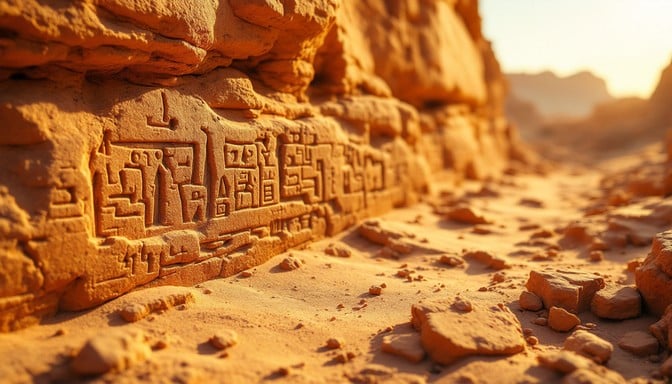The ancient civilization of which new discoveries are known to mark the future of Spain.
- New findings about the past of Tartessos have been found in a site in Extremadura.
- Archaeologists are researching on one of the most mysterious ancient civilizations
- Plato’s Atlantis could be real and in Spain: The mythical submerged city off the coast of Cadiz?
There are those who place the ancient Atlantis in a civilization that occupied the southwest of the Iberian Peninsula. Its name was Tartessos, and it is known to have existed by some historical texts of antiquity. However, for centuries very little has been known about these primitive inhabitants of the current lands of Cadiz, Huelva and Seville, that has unleashed a certain mixed air of legends and ignorance.
So much so that, as we have just pointed out, there are those who believe that the Atlantis referred to by the Greek philosopher Plato was this civilization located in what was then the end of the world, the lands west of the Pillars of Hercules (Strait of Gibraltar).
A site in Extremadura

Fortunately, the work of archaeologists never stops, which means that from time to time they find discoveries that shed light on the shadows of the past. And that is what happened in Casas del Turuñuelo at the end of 2023, when they came to the conclusion that they had found a Tartessian site from around the 6th or 5th century BC.
Despite these important excavations, they had not yet found enough evidence to give more clues about a civilization that some historians do not qualify as such, but as indigenous Iberian settlements that encountered trading peoples such as the Phoenicians or the Greeks.
It was at the beginning of June when scenes of warriors were discovered on a slate slab and a monumental facade that reached three meters in height.
Craftsmanship of Tartessos
As reported by Agencia EFE, the directors of the excavation and researchers from the Consejo Superior de Investigaciones Científicas (CSIC), Esther Rodríguez and Sebastián Celestino, were in charge of presenting the findings, highlighting the slate plate, which they consider to be a goldsmith’s plate, a material that served as a support for the craftsman when engraving the motifs that were designed to make pieces of gold, ivory or wood.
“This finding is a unique example in the peninsular archaeology and brings us closer to the knowledge of the artisan processes in Tartessus, invisible until now”, explained Rodriguez, who also assured that it helped them to complete the knowledge about the clothing, the armament and the headdresses. Likewise, the set of elements found provides important information on the productive processes of the Iron Age in the southwest peninsular, as well as it contributes clues to know better this semi unknown culture.
Interpreting an ancient culture
The new revelations will help to interpret this culture that had a great influence in the Guadiana Valley. In fact, the excavations that will continue to be carried out at this site will be aimed at finding out the degree of development and whether this was due to the influence of the peoples who sailed and traded in the Mediterranean.
Be that as it may, little by little more information is becoming known about a people who were important in the territory now occupied by Spain (and part of Portugal) and who probably had an influence on the later development of the area.
Tartessos, the mystery that does not cease
While waiting for the findings of Casas del Turuñuelo to shed more light on the mystery of Tartessos, we must remember that there are numerous ancient sources that name this civilization, as well as a king named Argantonio. But what do we know about Tartessos?
- It flourished in the south of the Iberian Peninsula between the 12th and 5th centuries BC.
- Their language has not been deciphered, nor is their ethnic origin exactly known.
- It is believed that they had a stratified society, with a ruling elite, artisans, farmers and slaves.
- Tartessos was known for its abundance of precious metals, especially gold and silver, which attracted Mediterranean traders.
- The presence of Phoenician colonies in the region, such as Gadir (present-day Cadiz), had a great impact on Tartessos, influencing its cultural, technological and economic development.
- The capital of Tartessos, mentioned in ancient texts, is often identified with the Tartessos River, which is believed to be the Guadalquivir River. However, the exact location is still a matter of debate.
One of the best-known characters of Tartessos is King Argantonius, who, according to the Greek historian Herodotus, ruled Tartessos for an exceptionally long period and had a friendly relationship with the Phoenician Greeks. The most recent discoveries point to cities of ancient underwater civilizations that were submerged by water or a diluge. So could the Tartessos had linked with ancient Atlantis? Or could Atlantis have been in Andalusia Spain?





